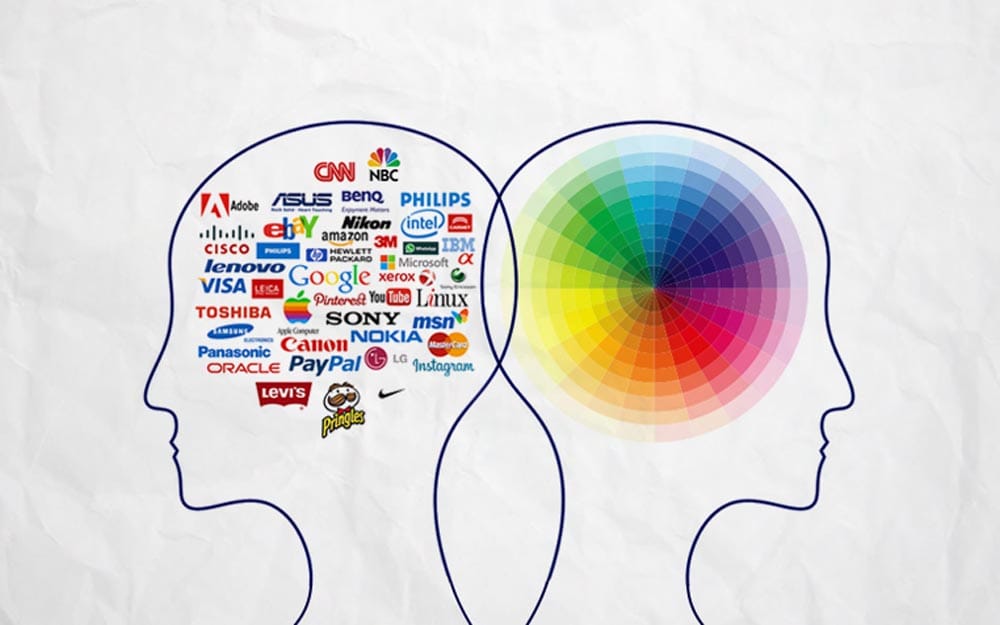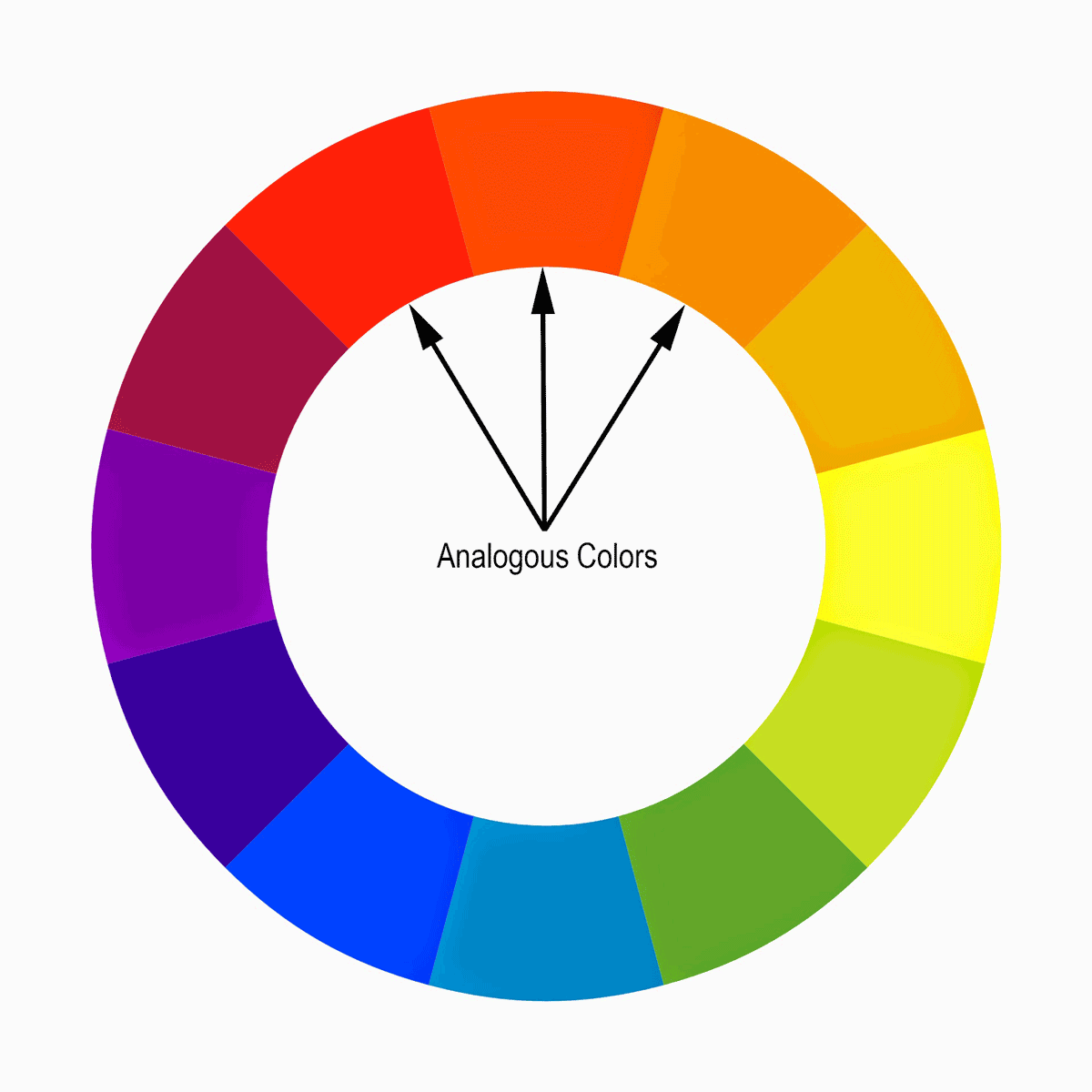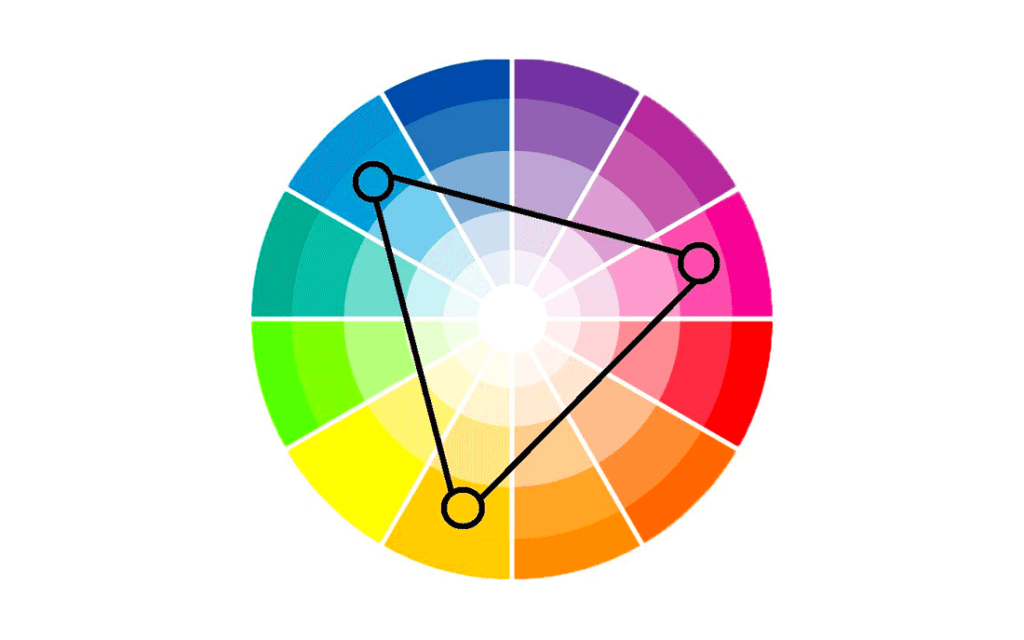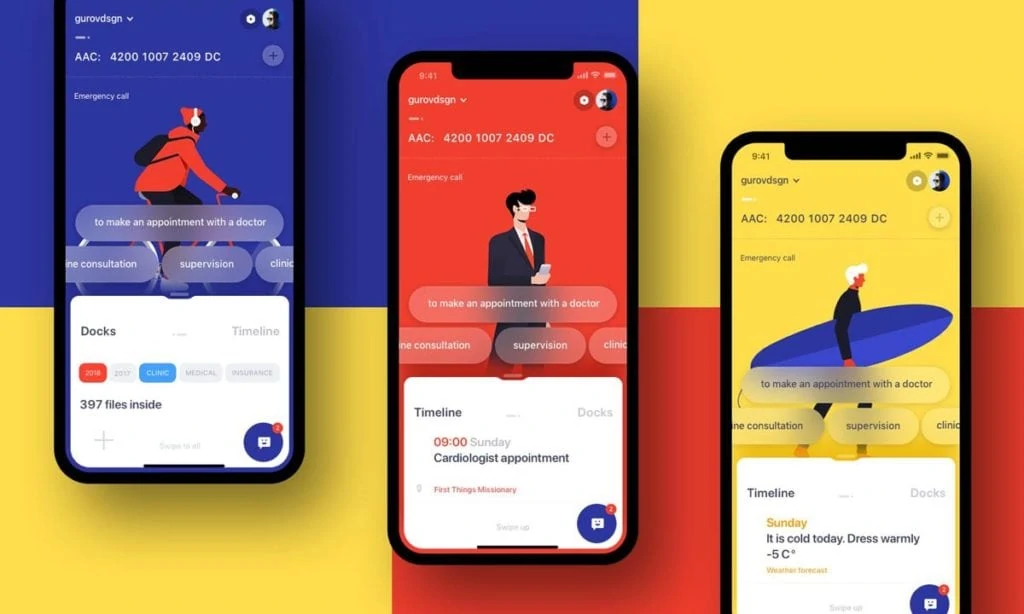Choosing The Best Colour Schemes For Websites
Is it time to take your website design up a notch?
One of the most impactful ways to do that is by choosing a captivating colour scheme that will speak to your viewers, reflect your brand character, and ensure an uninterrupted user experience.
This complete guide will delve into the world of colour theory, present reliable colour schemes for websites, and equip you with valuable tips for picking the perfect palette for your site. Let's begin!
- Choosing an effective colour scheme enhances user experience and reflects your brand identity.
- Understand colour psychology to evoke specific emotions in your audience.
- Apply the 60-30-10 rule for a balanced and visually appealing palette.
- Create accessibility through contrast, ensuring readability for all users.
- Utilise online tools to generate harmonious colour palettes effortlessly.
Understanding Colour Psychology

Before jumping into specific colours, it is important to understand some basic principles about how different pigments affect human emotions and perceptions. Do users think about brands differently depending on what you choose for your website design? Yes! Here are several associations commonly linked with various colours:
- Red: love/passion; energy/enthusiasm; excitement/urgency;
- Orange: creativity/friendliness; enthusiasm/optimism;
- Yellow: happiness/warmth; optimism/sunshine;
- Green: nature/harmony; growth/balance;
- Blue: trustworthiness/calmness/professionalism/dignity (colour of business);
- Purple: luxury/spirituality/mystery/royalty (colour of kings);
- Pink: romance/tenderness/playfulness/femininity (colour for girls' toys)
- Brown implies dependability while being earthy or rugged at times.
- Black connotes power but also sophistication or even mystery where necessary.
- White suggests purity accompanied by cleanliness, which equals simplicity and innocence.
Naturally, cultural disparities and individual encounters can influence people's perceptions of hues. Nevertheless, these general associations are good foundation points when choosing a palette that resonates with your brand identity and evokes desired feelings among the target audience.
The 60-30-10 Rule: A Foolproof Formula
Are you feeling overwhelmed by the infinite possibilities of colour? Fear not! We have a simple method to help you create a visually appealing and well-balanced colour scheme every time. It's called the 60-30-10 rule.
Here's how it works:
60% — Dominant Colour: This is the primary colour used for most of your website's background, significant elements, and overall theme. Ideally, it should align with your brand identity and set the tone for your site.
30% — Secondary Colour: A complementary or contrasting hue to your dominant one; this will be used for more minor elements like buttons, icons, accents, etc. The secondary colour should add visual interest without overpowering or competing with the main shade.
10% — Accent Colour: This is the third colour that should only be employed sparingly, perhaps on call-to-action buttons, highlights, emphatic text, etc. It must stand out from surrounding content to draw user attention towards essential information areas.
Following these guidelines will enable you to develop an attractive website design that harmoniously guides users through various pages.
Monochromatic Magic: Embracing Shades of a Single Hue

A monochromatic palette is one of the most straightforward and stylish colour schemes. All you have to do is pick any shade, tint or tone of any colour. The result of this method is an elegant, unified look that works perfectly for minimalistic designs or brands, aiming to create an impression of steadiness and trust.
To come up with a scheme like this:
- Select your primary colour, preferably the one that represents your brand.
- Generate lighter and darker versions of it using a colour wheel or tools like Adobe Color.
- Choose 3-5 shades that are different enough from each other in terms of brightness so they can be read quickly but still evoke some interest visually.
Follow the rule 60-30-10 — make the lightest shade your background, and use mid-tones for text and UI elements while applying the darkest one as an accent hue.
Monochrome palettes are great for corporate sites wanting sleekness or luxury appeal; tech-oriented companies going after modernity would also make a good fit. Ensure sufficient contrast between selected hues if readability is essential for your content.
Complementary Colours: Creating High-Contrast Vibrancy

Try complementary schemes to make a strong statement with colours on your website! These pairs sit opposite each other on the wheel (e.g., blue/orange, red/green, purple/yellow). This creates high contrast – vibrant combinations that attract attention when used together.
How to make them:
- Choose a base colour – preferably bold and saturated – representing what you stand for as a brand.
- Find its partner located diametrically across from it on the same circle (complementaries).
- Build depth into this by adding lighter/darker shades alongside these two initial choices to provide more variety within their range while still being related through shared components such as warmth/coldness, etc.; again, keep in mind readability, but don't be afraid to experiment here.
Such combinations are perfect for sites that want to leave an impression, such as creative portfolios or youth-oriented businesses dealing in food and beverages. Nonetheless, such highly contrasting approaches should only be employed sparingly not to overwhelm visitors too much.
Analogous Harmony: Crafting Serene, Cohesive Palettes

Consider analogous colour schemes if you'd instead go for a softer look. Such sets consist mainly of neighbouring hues on the wheel (e.g., blue/teal/green or red/orange/yellow). These colours create visual unity and tranquillity; hence, they can work wonders on websites wanting calmness, nature friendliness or even those just after consistency.
To create one:
- Choose your crucial shade – preferably something that reflects who you are as a company or individual.
- Pick two/three other shades located next door on each side of it within the same circle — this will help give extra depth through their various tints/shades while remaining connected by standard features like warmness/coldness, etc.; again, readability matters, but feel free to play around with these aspects.
Triads: Equally Eye-Catching Combinations

Want a colour scheme that's both well-balanced and eye-catching? Consider using triadic palettes! This means that you should select three colours evenly spaced out on the colour wheel; for example, red, yellow and blue or purple, orange and green. Doing so allows you to achieve visual harmony while keeping things lively through contrast.
Creating a triadic colour scheme:
- Start by choosing your primary colour – preferably something bold representing your brand.
- Next, find the two colours directly across from your base on the wheel (forming an equilateral triangle).
- Use lighter/darker versions of these three colours to create depth & variety within the palette.
The great thing about triadic schemes is their versatility – they can work wonders with various website types like creative agencies, website design services pages, promotional sites, educational platforms, etc. Balance them right so one colour takes up more space than others, supporting its role visually.
The Power of Palette Generators: Streamlining Your Colour Selection
Need help choosing a suitable colour scheme for your website? Don't worry! You can find various online tools and resources to help you generate beautiful palettes in just a few clicks. Here are some of them:
- Adobe Color: This all-rounded colour wheel tool allows users to make personal palettes based on various colour harmony rules, extract colours from images, and search through thousands of user-created schemes.
- Coolors: With its sleek interface, which is easy to use by everyone, Coolors helps generate and refine colour palettes in addition to real-time viewing on sample web layouts plus exporting for utilising them within designs.
- Paletton: This designer has many features, including customizability, where one can adjust different levels such as hue, saturation, or brightness within their scheme, among other things, such as previewing it using various layout templates.
- Color Hunt: If creating your own isn't what you want, it should be perfect since it offers curated ones. The platform boasts an extensive collection with submitted combinations from users worldwide, so there's bound to be something that matches any website's style or personality!
Take advantage of these fantastic tools, which would save time guessing what colours work best together when making sites look stunningly coherent.
Accessible Colour Contrast: Ensuring Readability for All
Although choosing an attractive colour scheme representing the brand is meaningful, it is also essential that the palette has enough contrast for readability. Suppose there is poor colour contrast; visually impaired individuals might find navigating your website difficult. In that case, they may also strain their eyes, especially when they do not have such problems.
Here are some ways to make sure your colour scheme is accessible:
- Evaluate the difference ratio between background colours and text using WebAIM's Colour Contrast Checker or another tool.
- Standard-sized texts use at least a 4.5:1 ratio, while larger ones (18pt+) go with a 3:1 ratio.
- Instead of relying purely on colours to communicate vital information — which could be problematic for people who are blind to them — consider incorporating supplementary visuals such as icons, patterns or even words.
- Try different gadgets under various lighting conditions to test whether all devices can read your chosen colours well in other situations.
When you design your site with colour accessibility in mind, you will create a platform that embraces everyone regardless of their limitations, making it more user-friendly and compliant with WCAG standards.
Putting It All Together: Creating a Cohesive Colour Experience

You know what you need to know about colour theory, typical colour schemes and the tools available for creating great palettes. But how do you implement that and design a website with a consistent colour experience?
Here are some tips:
- Base it on your brand: Your website's colour scheme should be an extension of your brand identity. When choosing your base colours, consider your logo, any other marketing materials you already have and the emotions you want people to feel when they see them.
- Think psychology: Different colours can make us think or feel different things, so pick ones that match what your site is meant to do or say. For instance, if it's about health and well-being, go for calm blues and greens; if it's a kids' toy store, go wild with bright, playful shades!
- Create a hierarchy: Use the 60-30-10 rule to establish visual order on your pages. Fill backgrounds with large elements like headers using dominant colours while assigning secondary ones like text or UI components before finishing with accents such as calls-to-action or highlights.
- Keep things coherent: Once chosen, stick to those colours! Nothing screams ‘amateur hour' louder than mismatched shades from different parts of the spectrum scattered across a single web page. So ensure everything gets written down in one place (i.e., style guide) along with its HEX code number. Hence, there's no excuse later on when adding them into areas like headers, footers, buttons, icons, etc., where necessary – this will help keep things looking polished and well thought out.
- Put it through its paces: Try out various combinations on different sections, then show colleagues (or even better target users) for opinions – sometimes outside eyes catch what we miss ourselves because they're less attached emotionally, which can lead to valuable insights/feedback from other perspectives, too… If possible, use A/B testing methods against performance data metrics during comparison stages, then tweak accordingly based on results-driven analysis.
If you follow these steps and tap into the emotional side of colour, you'll have a great-looking site that speaks well for your brand and engages users.
Conclusion
Colour is a powerful tool for web design. It can make people feel things, direct their behaviour, and differentiate your brand. If you understand the basics of colour theory, try some typical colour schemes and use available resources and software programs. You will be able to create a fantastic palette that unifies your site.
Don't forget, though — picking colours is not easy! You'll need to experiment with different hues and shades until you find what looks right to users while aligning with who you are as a company or person deep down inside. Use this guide as your starting point, but don't be afraid to stray far away from it because there's plenty more information on this subject than I could cover in one article alone!
You should know so much about yourself already, but Choosing colours still needs trial-and-error methods alongside user feedback sessions where many questions concerning identity have been asked repeatedly during each round… What do I want my website to say? What vibe am I trying to achieve?
In this guide, we have given all the tips needed for discovering knowledge about oneself through colours; however, we never fail to realise that even with these ideas at hand, it may take quite some time before arriving at such an understanding which genuinely works well for everybody involved; therefore let us not forget anything whenever possible!
We hope these insights will help equip people like yourself interested in website design – professionals or hobbyists – with enough know-how to successfully steer themselves around various colourful aspects associated with designing sites.
Come on now! Just think how much fun it would be if every person's screen looked different when they visited our site. They could chat about their favourite combinations and swap ideas… And besides, who doesn't love a good mystery?
FAQs on Colour Schemes for Websites
What does the 60-30-10 rule mean in colour scheming?
The 60-30-10 rule is a simple technique for creating a well-balanced and visually appealing colour scheme. In this method, you use a primary colour for 60% of your design, a secondary colour for 30%, and an accent colour for the remaining 10%.
How can I choose a colour palette that reflects my brand's personality?
When choosing colours to represent your brand identity, remember what you want people to feel when they think about your company or product/service. Consider also who will see these colours most often (target audience) and why such groups may come across them frequently (mission). This means going beyond mere aesthetics – although those should never be overlooked either! Think instead: What emotions do different shades evoke? How might one hue work better than another within my existing logo design, etc.? Use this information along with some knowledge about colour psychology so as not only to evoke desired emotions but also to ensure everything fits together aesthetically.
What are some common types of colour schemes used by designers?
There exist various kinds of schemes, namely monochromatic (shades derived from one base shade), complementary (colours opposite each other on the wheel), analogous (neighbouring hues) & triadic(three equally spaced colours).
How can I make my website's colour scheme accessible to everyone?
One way is through a contrast checker, highlighting if there's enough contrast between background and text colours. For standard text, the minimum ratio should be at least 4.5:1. Avoid relying solely on colour alone to convey significant meaning because it may not be visible to people with specific visual impairments or when viewed under different lighting conditions/devices.
What tools can help me create an incredible colour palette?
Some popular choices include Adobe Color, Coolors, Paletton & Color Hunt. They offer features like creating schemes based on colour harmony rules, extracting palettes from images and browsing through user-generated combinations.
How do I ensure a consistent colour experience throughout my website?
Firstly, choose a palette that aligns with your brand. Next, apply the 60-30-10 rule to establish a visual hierarchy, then use the same colours across different pages. Create a style guide listing all our codes and how they should be used in various contexts.
How many colours should I include in my site's colour scheme?
It is advisable to use only a few since this can make your design look chaotic or dilute brand identity. Three to five would suffice, i.e., one dominant hue, one secondary, plus two accents maximum.
Can different parts of my website have different colour schemes?
Although all parts should share similar colours so there's cohesiveness, some variations may still work well, mainly when applied within sections or specific pages, e.g., lightening up our blog area while darkening the products section but maintaining the same underlying shades.
How often should I update my website's colour scheme?
Your choice of colours should represent who you are as a company; thus, it should remain the same lest people need clarification, leading them to think otherwise. However, if there's been significant rebranding or current hues seem outdated, then yes, go ahead and refresh things!
What's the best way to get feedback on my design's colours?
Consider doing user testing or surveys among target audience members where emotional responses towards particular shades can be gauged alongside readability levels, etc. Also, variations can be tried using A/B tests, enabling data-driven decision-making about performance outcomes between various options available during the implementation stages.


